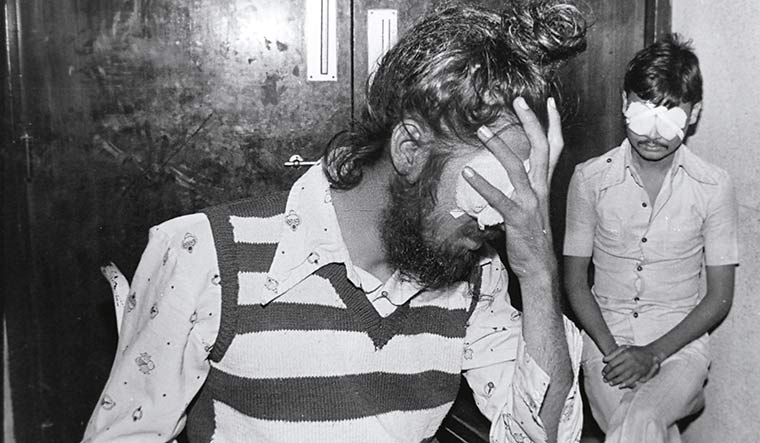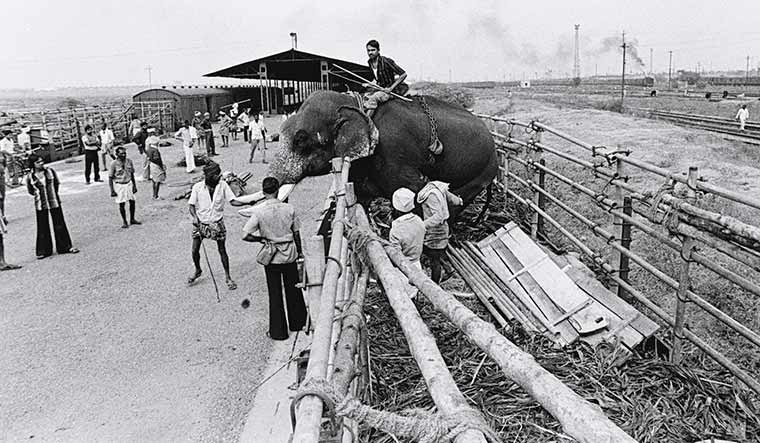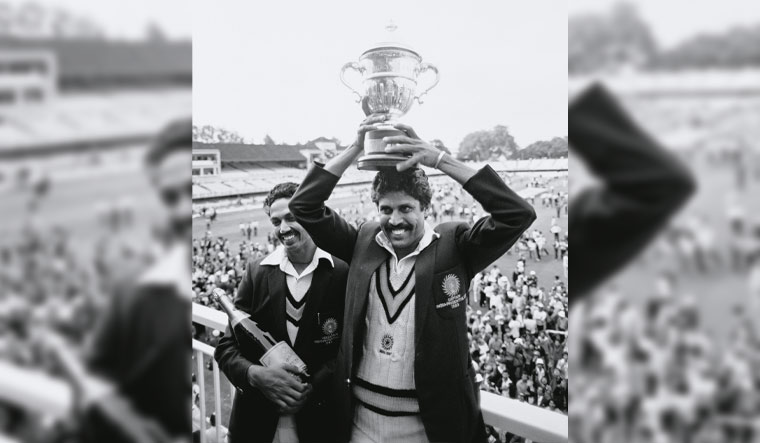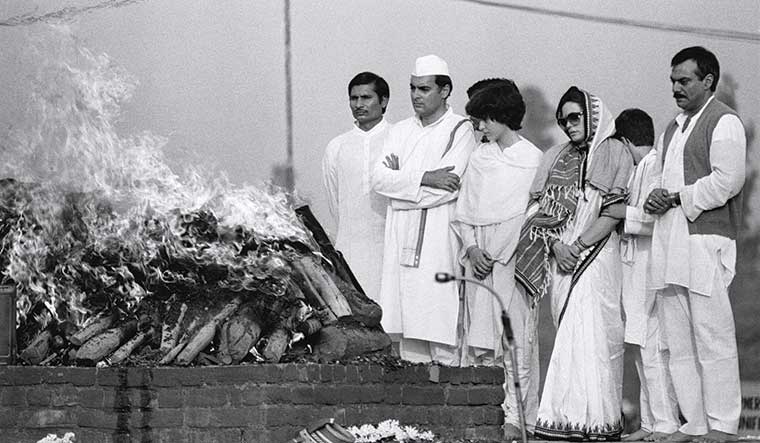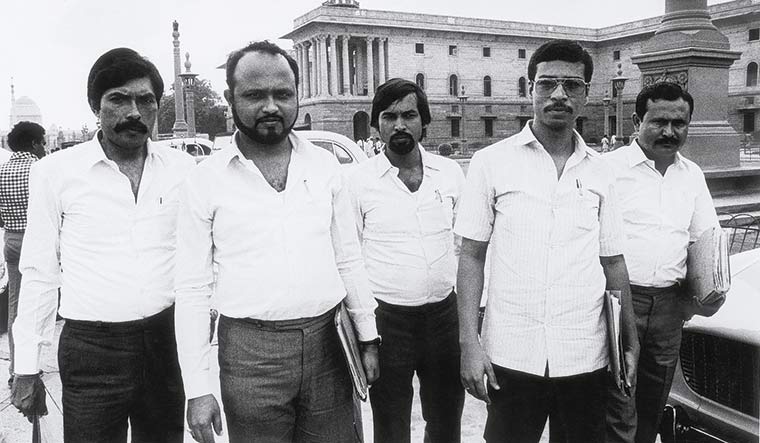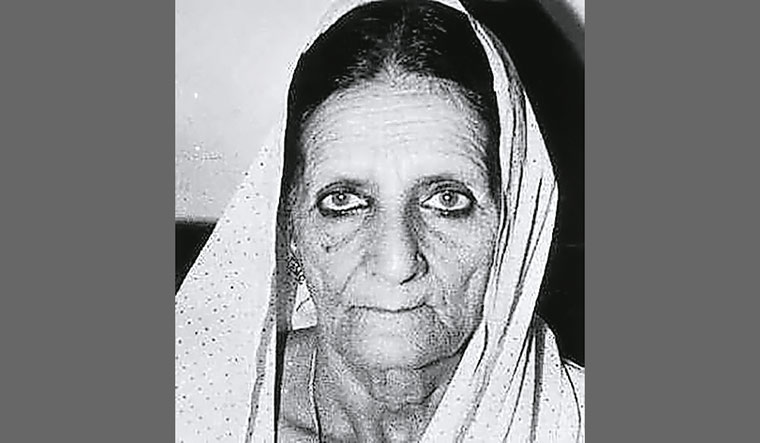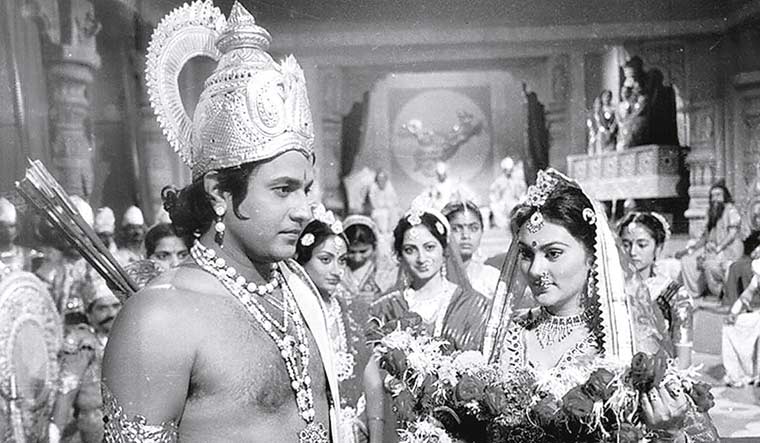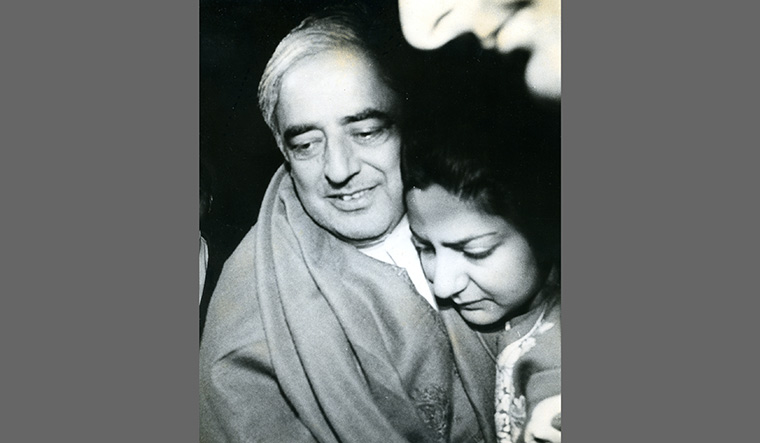The idea of an aspirational India takes form. Colour television comes to the country, as does the people’s car, Maruti 800, both changing middle-class aspirations. Rakesh Sharma goes to space and Bachendri Pal scales Mt Everest.
Aspirations bring disappointments, too. P.T. Usha teaches India the value of a fraction of a second, the margin by which she loses the Olympic bronze.
Doordarshan has a lot to offer—Buniyad, Nukkad, Fauji and Chitrahaar—and people come to prefer watching a soap opera on television to dropping over at someone’s place for chai and chatting. Lord Ram brings the country together through Doordarshan’s hugely popular Ramayan. In villages without electricity, community TVs powered by truck batteries get floral offerings before the telecast starts.
Television also brings harsher stories to the drawing room. The army launches Operation Blue Star to smoke militants out from the Golden Temple in Amritsar. The operation is a success, but Indira Gandhi pays for it with her life. Her assassination triggers anti-Sikh riots. Even as turmoil grips the nation, the Union Carbide plant in Bhopal spews poison gas to cause the country’s worst industrial disaster. CEO Warren Anderson manages to leave the country, literally getting away with murder.
Rajiv Gandhi succeeds Indira, and signs a slew of accords in the hope of bringing peace to disturbed states—from Assam to Punjab. But a nation does not run on earnestness alone. Kashmir, having long simmered, erupts. The exodus of Kashmiri Pandits begins.
Rajiv decides to scuttle a Supreme Court judgment that guarantees right to maintenance to divorced Muslim women. The move ushers in vote bank politics. Another of his miscalculations—sending the Indian Army to Sri Lanka—will cost him his life. But he does usher in computerisation, giving wings to India’s modernisation dreams.
1980
From Bihar’s Bhagalpur comes a horrid tale of torture. Using acid, the police blind at least 33 prisoners and undertrials. Two of the victims (above) are treated in Delhi. In a landmark ruling, the Supreme Court orders the government to compensate them.
Voters turn a blind eye to the Emergency’s excesses and re-elect Indira Gandhi as prime minister. Months later, Sanjay Gandhi dies in an aircrash.
1981
Salman Rushdie’s Midnight’s Children wins the Booker Prize. The book will later be adjudged the Booker of Bookers. Later in the decade, the Bombay-born Rushdie runs into trouble with the novel The Satanic Verses, which leads to widespread protests and death threats against him in the Islamic world | Getty Images
1982
Colour television comes to India, and the Asian Games is the first big event to be telecast in colour—and that, too, live. (Above) Trained elephants from temples in Kerala being taken to venues in Delhi for the opening ceremony of the Games in November | Getty Images
1983
Team India, led by Kapil Dev, brings home the Prudential World Cup from Lord’s, England.
Cricket is already a religion in India. In the decades to come, Sachin Tendulkar will emerge as the god of cricket, and the Indian Premier League will be one of the most valued sporting events in the world.
(Above) Kapil with Mohinder Amarnath at Lord’s | Getty Images
1984
Operation Blue Star, to flush out terrorists in the Golden Temple in Amritsar, leads to the death of nearly 600 people, mostly militants, and 79 soldiers. Five months later, Indira Gandhi is assassinated by her bodyguards, and anti-Sikh violence breaks out. Amid the turmoil, the leak of poison gas from the Union Carbide plant in Bhopal results in thousands of deaths. Surely, India’s annus horribilis.
(Above) Rajiv Gandhi, Indira’s son and successor as prime minister, with his wife, Sonia, and daughter Priyanka, at Indira’s funeral | Getty Images
1985
(From left) All-Assam Students’ Union leaders Lalit Rajkhowa, Prafulla Kumar Mahanta, Nagen Sarma and Brigu Phukan in Delhi after signing the Assam Accord with the Rajiv Gandhi government. The accord, and Mahanta’s subsequent appointment as Assam chief minister, bring a sense of stability to the politically volatile state. A slew of peace accords in various states follow | Getty Images
1986
The government passes the Muslim Women (Protection of Rights on Divorce) Act, negating the Supreme Court’s judgment in the Shah Bano case that took the maintenance issue out of the ambit of Muslim personal law. The government’s move is the beginning of vote bank politics in India.
1987
Ramanand Sagar’s Ramayan debuts on Doordarshan, and becomes hugely popular. It is followed by Mahabharat some years later. The shows will enjoy a revival in popularity during the 2020 Covid lockdown, when Doordarshan airs them again.
It is also the year of a costly foreign-policy misstep—the Indian Peace Keeping Force is deployed in Sri Lanka.
1988
A high-optics thaw in India-China relations, as Rajiv Gandhi visits Beijing and shakes hands with Deng Xiaoping, China’s paramount leader | Getty Images
1989
Militancy grips Kashmir. Union home minister Mufti Mohammed Sayeed’s daughter Rubaiya is kidnapped. Five captured militants who underwent training in Pakistan are freed to secure her release. On December 13, Rubaiya is reunited with her father in Delhi.
The year marks the beginning of the exodus of Kashmiri Pandits



